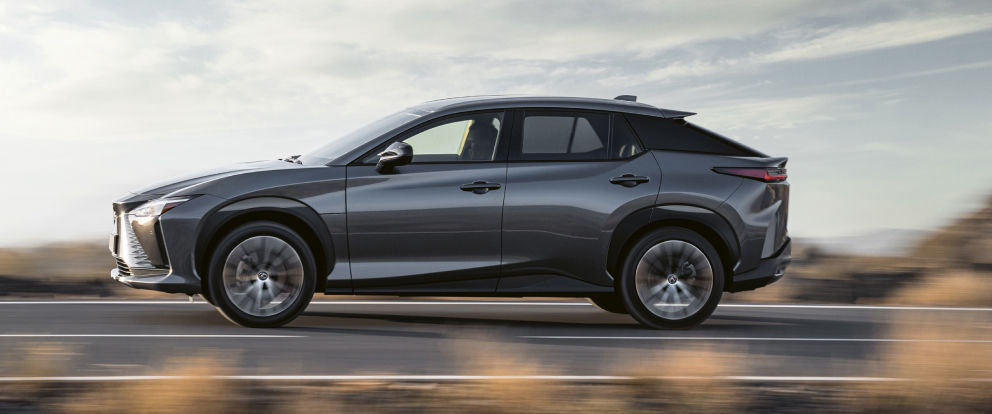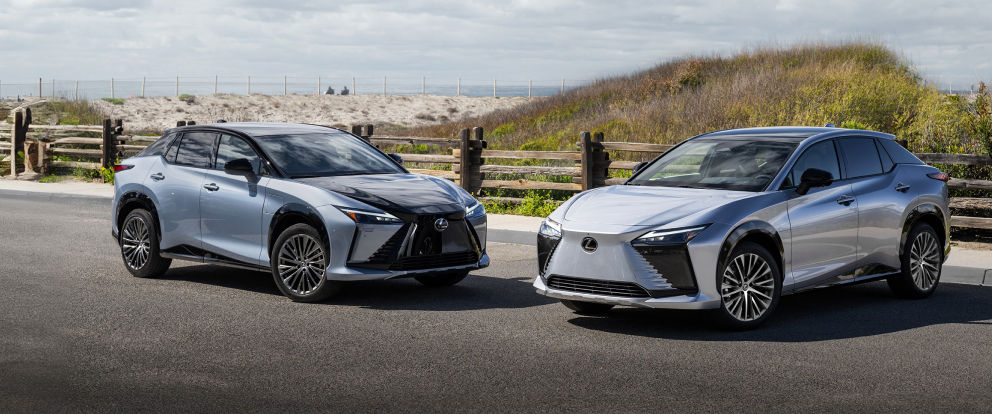Sharper Performance
Combining an electric motor with a DIRECT4 AWD on a battery electric-specific e-TNGA platform allows the vehicle to respond to the driver’s intentions in any condition.
Entrance to this website assumes you have read and agree to these Legal Terms and Conditions and the privacy policy.

Lexus Battery Electric Vehicles (BEV) deliver a responsive, exhilarating drive powered by an electric motor with zero emissions.
The electrified future you’ve been waiting for is here. Lexus Battery Electric Vehicles (BEVs) offer all the luxury you’ve come to expect from Lexus, with an all-electric drive that offers instant acceleration, quiet operation, smooth performance, and zero emissions. To say that it’s what driving was meant to be would not be an understatement.


Combining an electric motor with a DIRECT4 AWD on a battery electric-specific e-TNGA platform allows the vehicle to respond to the driver’s intentions in any condition.

Without a combustion engine, the body of a BEV can be further refined for optimal aerodynamics. This styling evolution ushers in a new Lexus aesthetic and establishes a new design direction.
You can charge a Lexus BEV at home, at work, or at most public EV charging stations. Battery Electric Vehicle charging times will vary depending on whether you are using Level 1, 2 or 3 EV charging.

At Home Charging
Charge anywhere with a common household 3-prong outlet.
At Home and Public Charging
The best setup for faster charging at home once installed by a licensed electrician.1
Public Charging
Only available at select public charging stations.2
Lexus BEVs have excellent range, that can easily manage your day-to-day driving and beyond. For example, get up to a Lexus-estimated 478 km for 2026 RZ 350e Signature under ideal conditions3.
BEVs can be charged at home with the provided Level 1 charging cord or available Level 2 charging solutions4, or at public EV charging stations with Level 2 Chargers and Level 3 DC Fast Chargers.
Batteries in BEVs naturally degrade over time, shown as a gradual loss of capacity. While this decline is inevitable, good charging habits can help maintain your battery state of health and maximize performance.
While we hope this does not happen to you, Roadside Assistance5 can provide towing to your home, or the nearest public EV charging station to help get you back on the road. With your new car warranty, Roadside Assistance is included for 48 months.
Lexus BEVs afford you the range to get wherever you want to go, with confidence. The average Lexus BEV provides 350-400km of driving per day, which compares very well to the average of just 60 km per day that most Canadians drive. You can also ensure that you get the range you require, by doing things like preconditioning the battery – particularly in colder weather.

Innovative thinking. Advanced technology. Stunning design. Lexus Battery Electric Vehicles offer all this, with zero emissions and the Lexus driving signature you have come to expect.